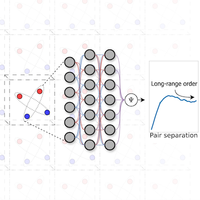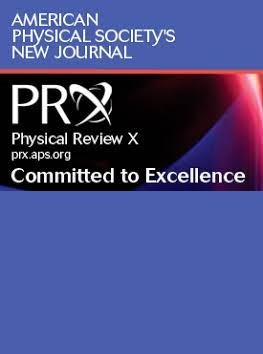超流体的神经波函数
IF 11.6
1区 物理与天体物理
Q1 PHYSICS, MULTIDISCIPLINARY
引用次数: 0
摘要
理解超流仍然是凝聚态物理学的一个主要目标。在这里,我们利用最近开发的费米神经网络(FermiNet)波函数解析[D. Pfau 等人,Phys. Rev. Res. 2, 033429 (2020)。我们研究了单元费米气体,这是一个具有强短程双体相互作用的系统,已知它具有超流体基态,但难以定量描述。我们证明了费米网反演在研究单位费米气体时的主要局限性,并提出了一种基于反不对称geminal power singlet(AGPs)波函数思想的简单修改。在成对系统中,新的 AGPs FermiNet 明显优于原始的 FermiNet,其结果比固定节点扩散蒙特卡洛更精确,并且与实验一致。我们用数学方法证明,尽管使用了更少的参数,但新的安萨茨与原始安萨茨的区别仅在于反对称方法,是对原始 FermiNet 架构的严格概括。我们的方法与最初的 FermiNet 有几个共同的优点:神经网络的使用消除了对底层基集的需要;在变异量子蒙特卡洛框架内,网络的灵活性产生了极其精确的结果,可以对任意基态期望值进行无偏估计。我们讨论了如何将这种方法扩展到研究其他超流体。本文章由计算机程序翻译,如有差异,请以英文原文为准。

Neural Wave Functions for Superfluids
Understanding superfluidity remains a major goal of condensed matter physics. Here, we tackle this challenge utilizing the recently developed fermionic neural network (FermiNet) wave function Ansatz [D. Pfau et al., Phys. Rev. Res. 2, 033429 (2020).] for variational Monte Carlo calculations. We study the unitary Fermi gas, a system with strong, short-range, two-body interactions known to possess a superfluid ground state but difficult to describe quantitatively. We demonstrate key limitations of the FermiNet Ansatz in studying the unitary Fermi gas and propose a simple modification based on the idea of an antisymmetric geminal power singlet (AGPs) wave function. The new AGPs FermiNet outperforms the original FermiNet significantly in paired systems, giving results which are more accurate than fixed-node diffusion Monte Carlo and are consistent with experiment. We prove mathematically that the new Ansatz, which differs from the original Ansatz only by the method of antisymmetrization, is a strict generalization of the original FermiNet architecture, despite the use of fewer parameters. Our approach shares several advantages with the original FermiNet: The use of a neural network removes the need for an underlying basis set; sand the flexibility of the network yields extremely accurate results within a variational quantum Monte Carlo framework that provides access to unbiased estimates of arbitrary ground-state expectation values. We discuss how the method can be extended to study other superfluid.
求助全文
通过发布文献求助,成功后即可免费获取论文全文。
去求助
来源期刊

Physical Review X
PHYSICS, MULTIDISCIPLINARY-
CiteScore
24.60
自引率
1.60%
发文量
197
审稿时长
3 months
期刊介绍:
Physical Review X (PRX) stands as an exclusively online, fully open-access journal, emphasizing innovation, quality, and enduring impact in the scientific content it disseminates. Devoted to showcasing a curated selection of papers from pure, applied, and interdisciplinary physics, PRX aims to feature work with the potential to shape current and future research while leaving a lasting and profound impact in their respective fields. Encompassing the entire spectrum of physics subject areas, PRX places a special focus on groundbreaking interdisciplinary research with broad-reaching influence.
 求助内容:
求助内容: 应助结果提醒方式:
应助结果提醒方式:


